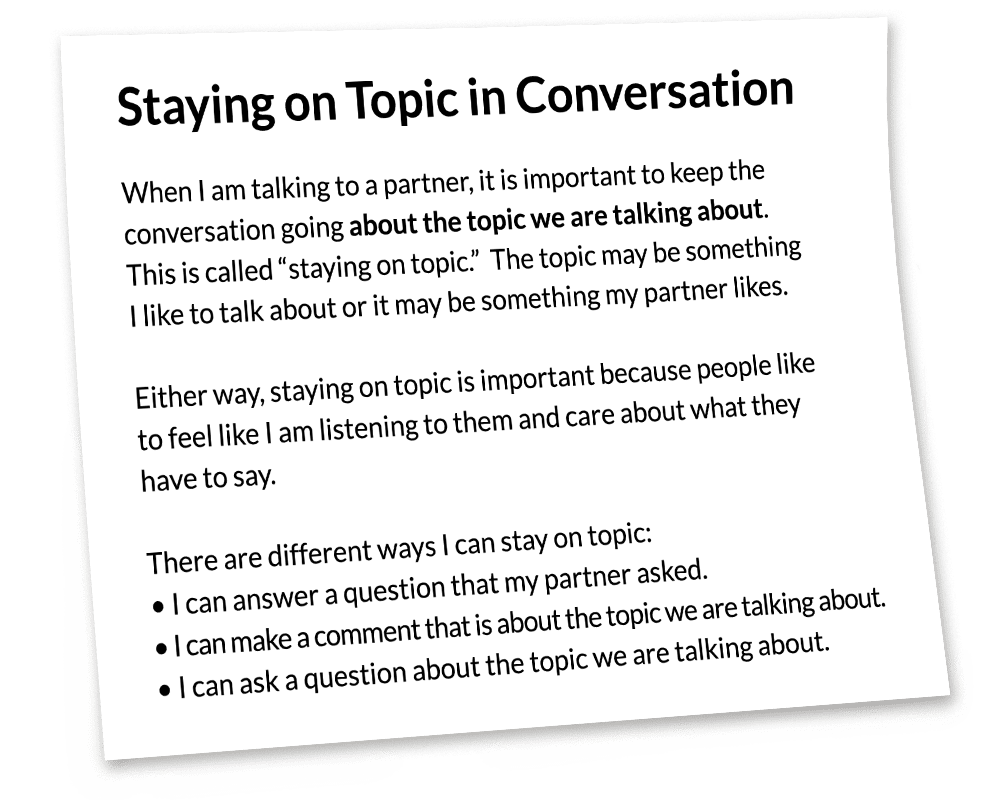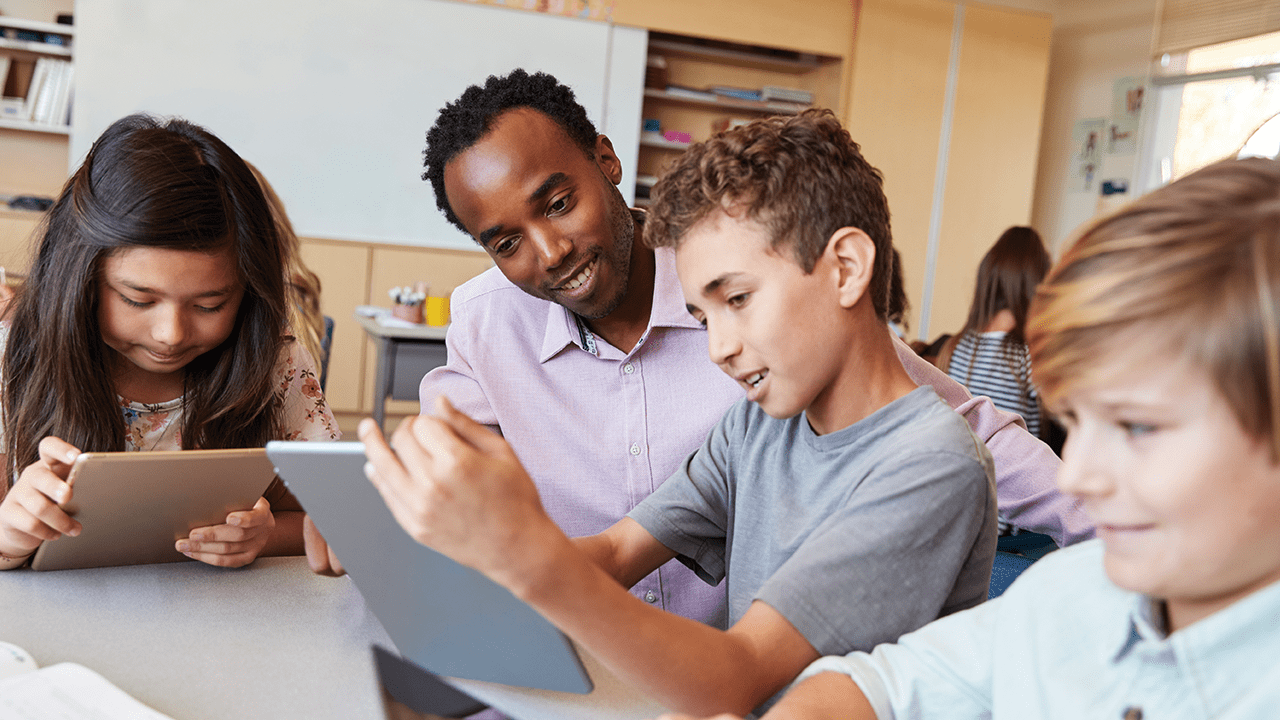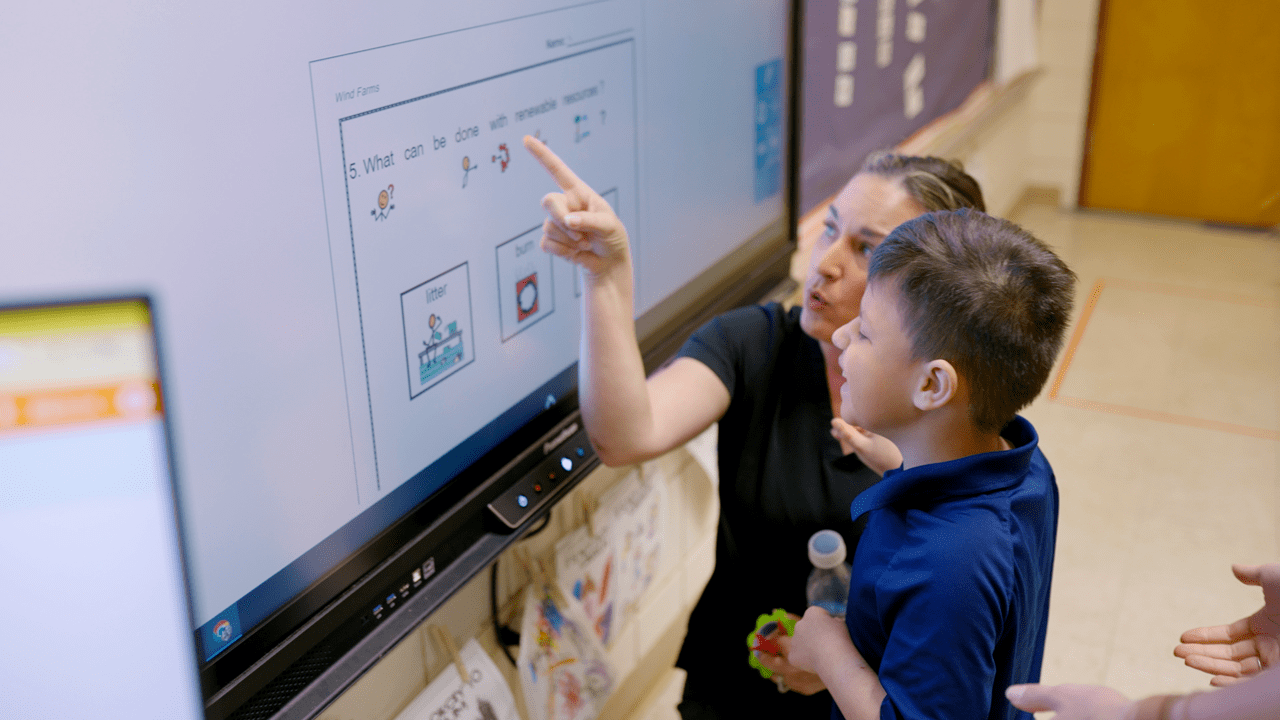A benefit of this technique is that rather than just one or two students responding to a question during a class-wide discussion, all students are given the chance to process the lesson in the context of a brief conversation while engaging with a peer. Turn and talk allows students to learn from each other, gain new perspectives on a topic, and gain a deeper understanding of the material being taught. While some use turn and talk to reflect on literary passages, the strategy is just as effective to process math concepts, understand events in history, and apply principles in science.
Research has shown that a student’s ability to engage in conversation is tied to overall academic success. And with so many students working toward IEP goals related to oral language, turn and talk is an excellent strategy to put to use in the classroom.
Getting Started
The role of an educator is to first state a clear question, then canvass the room to get a sense of students’ grasp of the subject. What do they know? What do they still wonder? You may have to intervene to ensure partners are taking turns, staying on topic, and responding appropriately.
Some students may need additional support to make the most of this learning time. Think about the variety of skills that are required to participate in turn and talk. If a student needs support to carry out individual skills, this is the place to focus your planning.
Skills that come into play during turn and talk include, but are not limited to:
- Listening
- Turn-taking
- Verbalizing thoughts
- Incorporating new vocabulary
- Asking questions
- Responding to questions
- Expressing agreement or disagreement
- Expressing a preference or opinion
- Staying on topic
Use visual supports to provide students with cues and reminders they may need to fully participate in turn and talk activities with peers. As an evidence-based practice, visual supports can be used to teach an array of communication skills. And visual supports can easily be implemented in either a self-contained classroom or an inclusive classroom.
Imagine you are sharing a lesson on introducing poetry to your class. You begin by discussing the purpose and structure of a poem. You want your students to reflect on the differences between poems and prose, so you pause for a few minutes of turn and talk by asking the class, “What differences do you notice between poems and prose? Take two minutes to share your thoughts with your partner.” Once students begin their discussion, there may be a need to provide additional support or direction to some students for them to get the most out of this time.
Clarify Expectations
Provide clear expectations for the students; for turn and talk, some students may need explicit cues to know what the exact steps of the process are, how long to talk, and when to rejoin the larger group. By having access to a visual cue, students can see and be reminded of the rules for participating in turn and talk activities. A timer can be useful to indicate the duration of a conversation. Consider using a hand signal when it is time for the class to come back together. The exact steps of participating can be outlined on a reminder card that the student can access during turn and talk. Alter the presentation of these reminders to match each student’s cognitive level. For some, pictures may be an effective way to communicate the rules. For others, simple words or phrases suffice. And still other students may benefit from a social narrative that helps them understand their role, their peer’s role, and what they can gain from having a conversation.
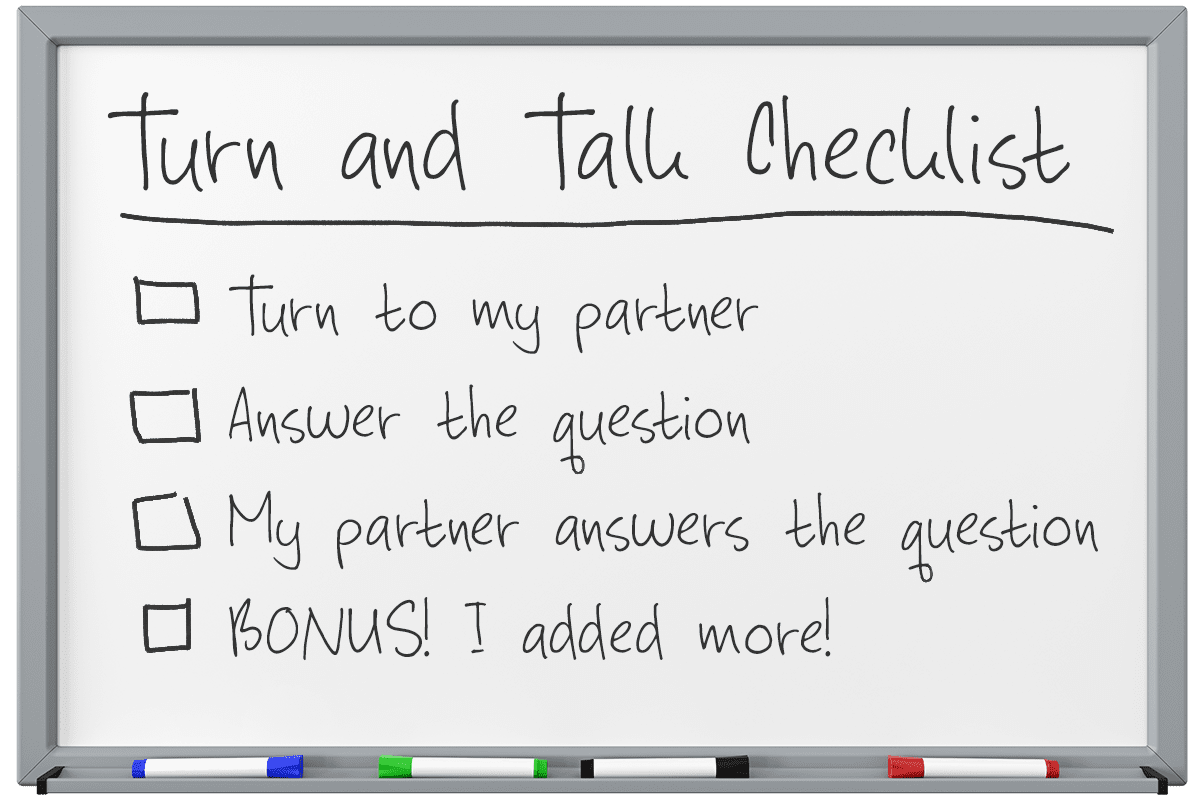
Turn-taking
A basic building block of participating in conversation is the ability to take turns. A student working on this skill may require an additional cue to be able to effectively participate in turn and talk activities. This visual cue could be an object that the students pass back and forth, with the person holding the object speaking. This could be a two-sided card indicating “My Turn” on one side and “Wait” on the other, reminding each learner of their role. The card is then flipped and handed over when it is the other student’s turn. A visual checklist can indicate how many turns each student should take. The list can contain the students’ pictures or their written names, alternating to show the turn-taking sequence.
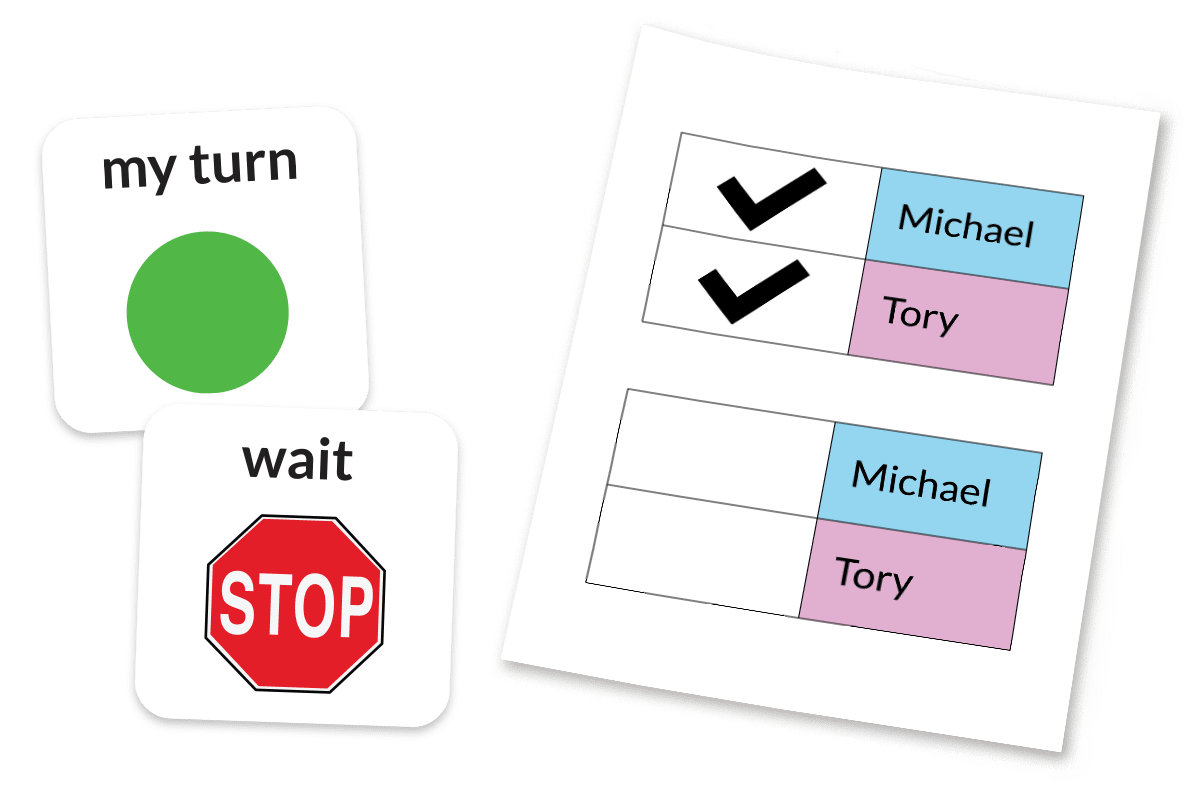
Sharing Ideas
Sentence starters can be a support for students who need help getting started with sharing their thoughts out loud. An additional benefit of sentence starters is that they can enhance the variety of language and sentence structure that students use in conversation. An important part of turn and talk is asking questions of your partner. A sentence starter can also help students generate questions to ask of their peers.
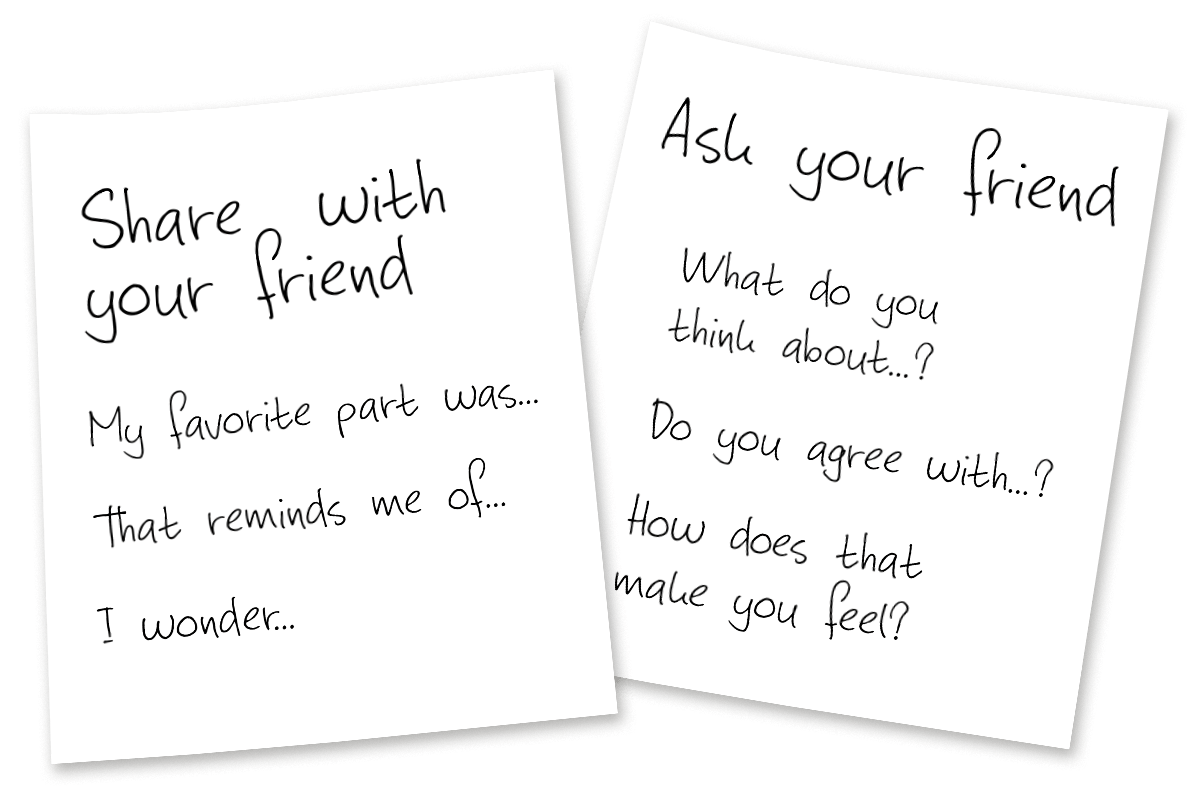
Staying on Topic
While some students may have no problem initiating and engaging in conversation, they may struggle with topic maintenance. Visual cues can help keep them on track with a reminder to stop, think about their contribution, and check to be sure it is connected to the topic. Again, a social narrative can also help students understand the perspective of their conversational partner and how off-topic comments can detract from the topic at hand.
